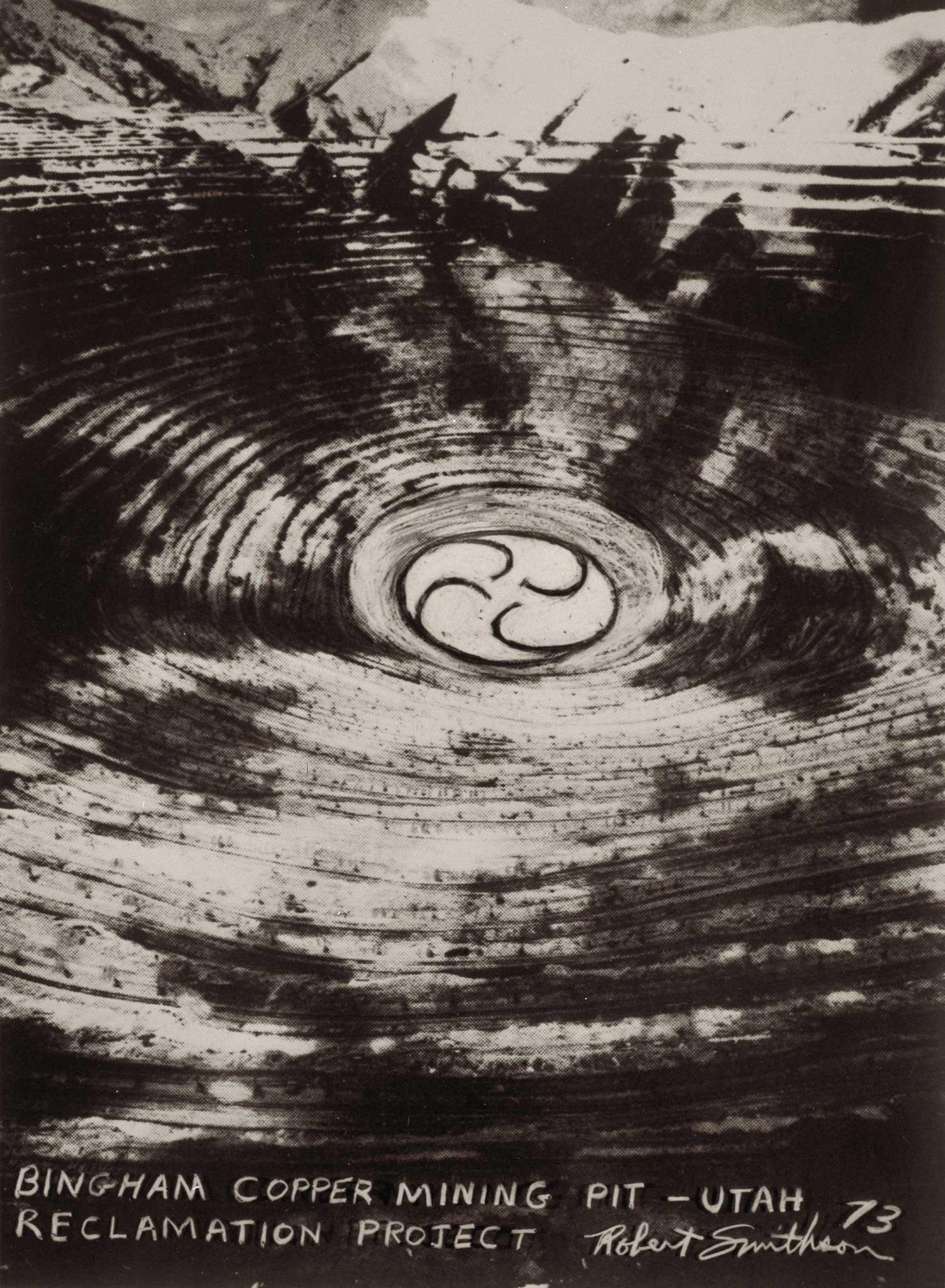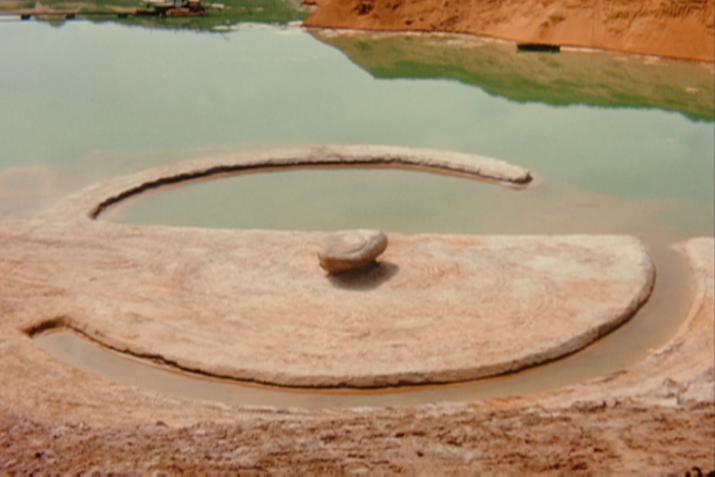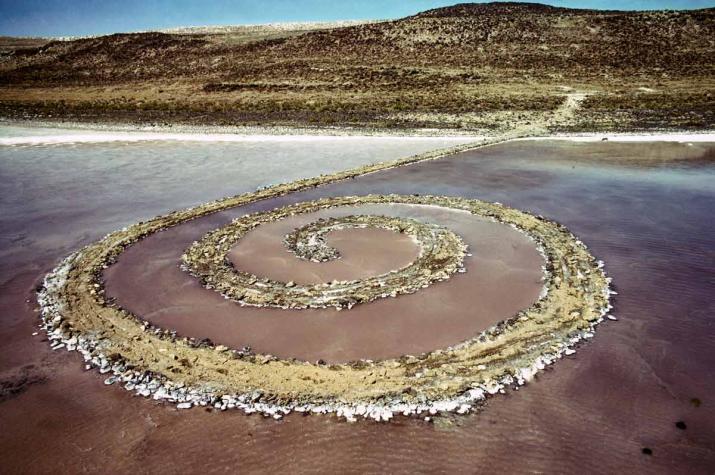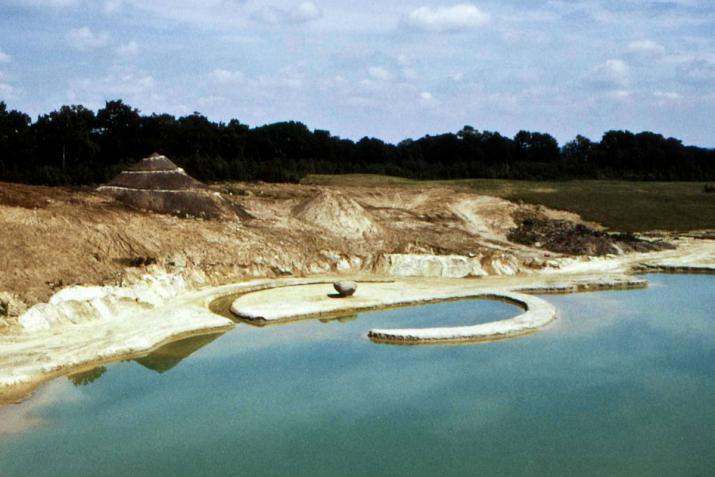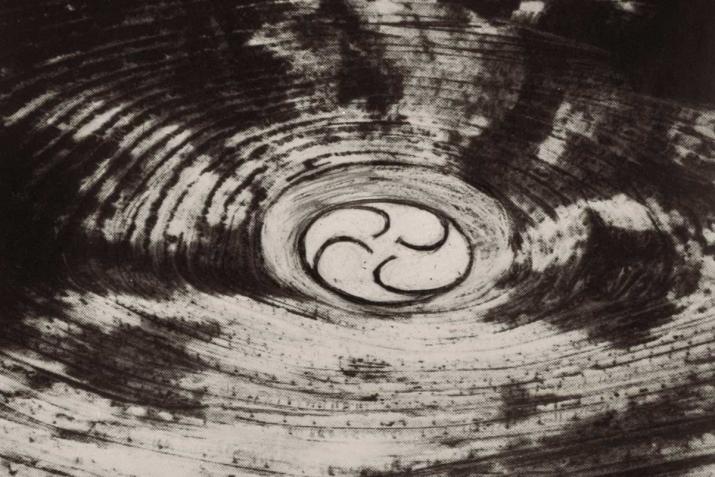
Bingham Copper Mining Pit—Utah / Reclamation Project (1973) and Robert Smithson’s “land ethic”
Robert Smithson’s earthworks Spiral Jetty (1970) and Broken Circle /Spiral Hill (1971) are located in sites ravaged by mineral extractions. Both have their origins in the artist’s idea of “entropic landscape,” and are localities where the encounter between two temporalities can be apprehended: geology’s deep time, which has shaped the landscape over millions of years, and the “intensive,” or “superficial,” time of human culture and its extractive processes that revolve and devastate the surface of the Earth in a mere few years.
